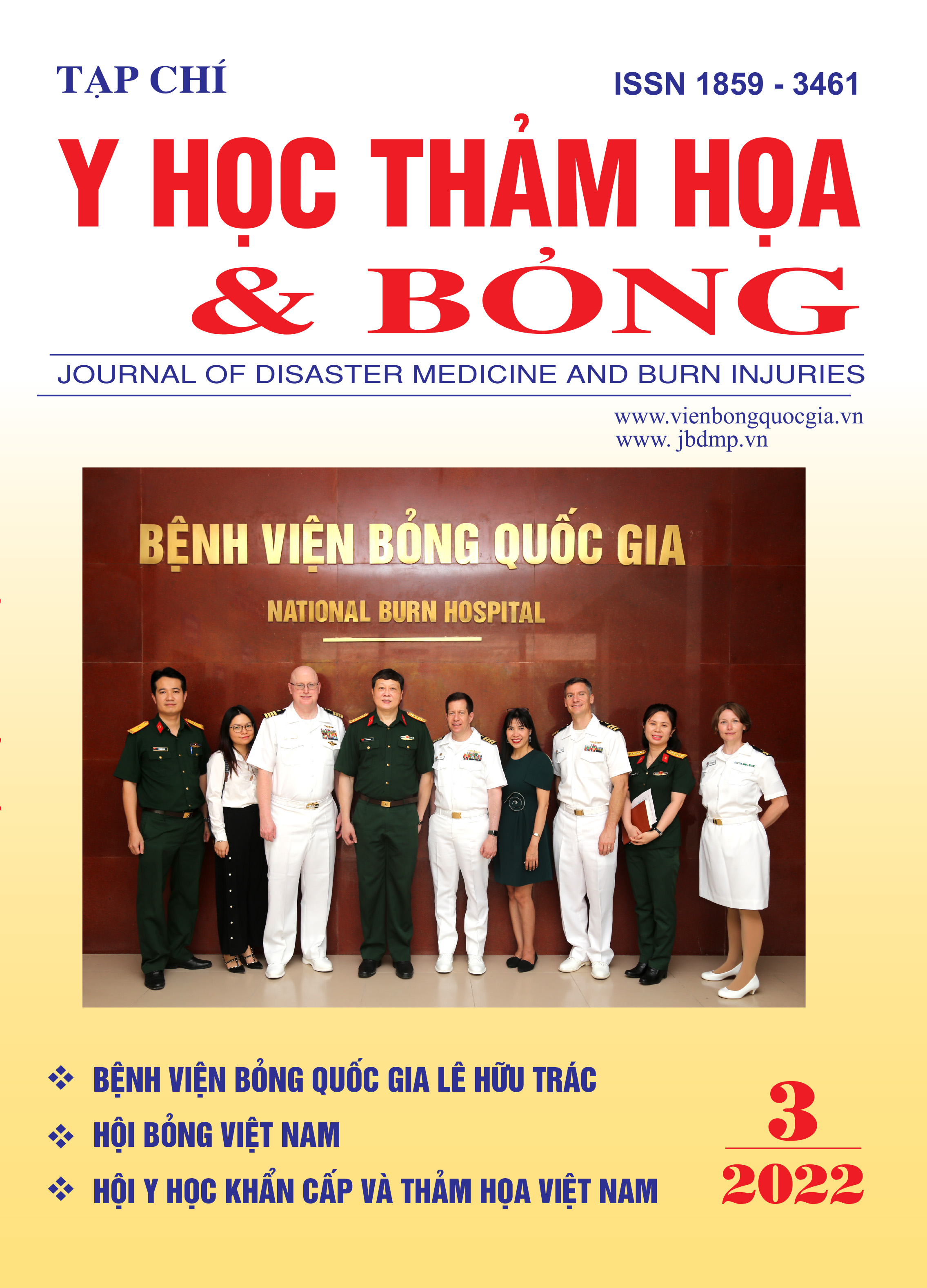Evaluation liposuction technique for thinning and expanding the deep inferior epigastric peforator flap in cervicomental scar reconstruction.
Main Article Content
Abstract
In reconstruction, the flap is the optimal substitute material, especially for covering extensive defects. The requirements for the skin-free flap must be wide enough to cover the damage, thereby returning function, along with specific aesthetic requirements in terms of thinness, softness as well as color harmony with the surrounding skin area. However, with more significant defects, harvesting flaps of comparable size is always challenging for plastic surgeons. There has been much research to expand the territory of the flap, such as tissue expander, flap supercharged, delay techniques for the flap, and new studies are developing.
We introduced some initial results using the liposuction technique to thin flaps and successfully applied it to five patients for thinning and expanding the deep inferior epigastric perforator flaps to cover various burn defects and have the suitability with characteristics of reconstructive requirements.
Article Details
Keywords
Perforator flap, contracture scar
References
2. Ince, B., S. Yarar, and M. Dadaci, Simultaneous flap thinning with ultrasound‐assisted liposuction during free flap surgery: Preliminary results. Microsurgery, 2019. 39(2): p. 144-149.
3. Scheflan, M. and M.I. Dinner, The transverse abdominal island flap: part I. Indications, contraindications, results, and complications. Annals of plastic surgery, 1983. 10(1): p. 24-35.
4. Scheflan, M. and M.I. Dinner, The transverse abdominal island flap: Part II. Surgical technique. Annals of plastic surgery, 1983. 10(2): p. 120-129.
5. Chirappapha, P., et al., Is it reasonable to use indocyanine green fluorescence imaging to determine the border of pedicled TRAM flap zone IV? Plastic and Reconstructive Surgery Global Open, 2020. 8(9).
6. Phung, N.V., Nghiên cứu sử dụng vạt da nhánh xuyên động mạch thượng vị dưới sâu trong điều trị di chứng phẫu thuật cắt bỏ ung thư vú. Luận văn Tiến sĩ y học - Học viện Quân Y, 2019.
7. Blondeel, P., One hundred free DIEP flap breast reconstructions: a personal experience. British journal of plastic surgery, 1999. 52(2): p. 104-111.
8. Thomas, C., Thin flaps. Plastic and Reconstructive Surgery, 1980. 65(6): p. 747-752.
9. Ohjimi, H., et al., A comparison of thinning and conventional free-flap transfers to the lower extremity. Plastic and reconstructive surgery, 2000. 105(2): p. 558-566.
10. Chetboun, A. and A.C. Masquelet, Experimental animal model proving the benefit of primary defatting of full-thickness random-pattern skin flaps by suppressing “perfusion steal”. Plastic and reconstructive surgery, 2007. 120(6): p. 1496-1502.


